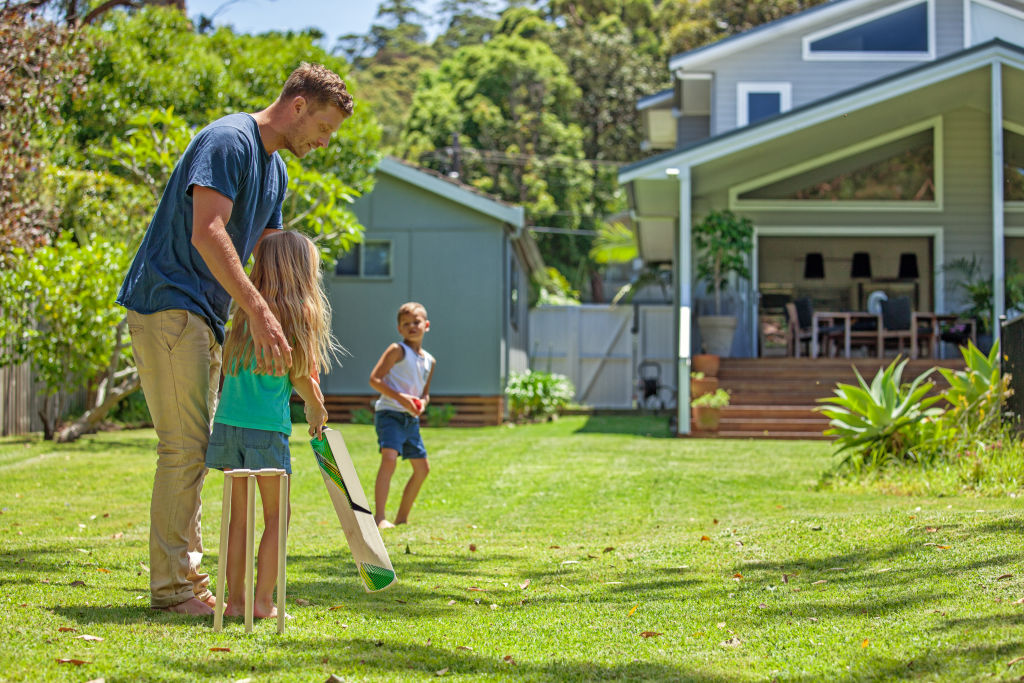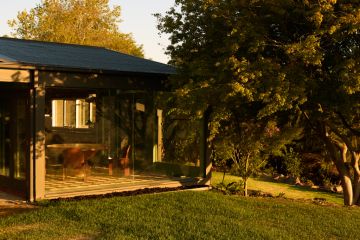The perfect pitch: How to get your lawn ready for summer and backyard cricket season

A healthy expanse of green grass not only sets the right tone for a property, it also takes in carbon dioxide, releases oxygen, and helps eradicate dust and pollutants from the air.
For all its advantages, laying new lawn or maintaining existing grass can feel like a daunting task.
“The success of your lawn depends on how well it is laid and maintained,” says Adam Lewis, curator at the Sydney Cricket Ground. “With the weather heating up and plenty of sunshine around, now is the ideal time to lay new turf or get your established lawn looking good again.”
Using simple, insider tricks and an effective routine, it’s easy to make your lawn your new favourite living space – whether it’s a summer cricket pitch for the family or a beautiful green patch that draws you in the moment you arrive home.
The first step is to ensure the variety of grass you choose is the right one for its intended purpose.
“Regardless of where you live or the climate, buffalo is the best option for a beautiful lawn, because it is durable and soft underfoot. For the perfect home cricket pitch, kikuyu is ideal and easy to maintain.”
When laying turf, begin by preparing the area, raking it evenly with topsoil followed by a wetting agent to ensure it is hydrated effectively.
“A liquid or crystal solution is ideal,” says Lewis. “Put it straight on to the soil so it penetrates properly taking the water with it.”
Spread a layer of start-up fertiliser over the top, ensuring a nice even coverage, then lightly wet it down.
Lay down the turf, starting hard in one corner. Lay your grass in a brick pattern to avoid lines, making sure the edges of each piece are pressed firmly into each other.
“Use a spade or knife to cut the turf, so it fits at each end and winds neatly around tree stumps, then hose well,” says Lewis. “The biggest mistake people make is letting the grass dry out before the roots have a chance to become established. A new lawn should be kept moist for its first five days. After that, water once a week to allow the roots to search for water.”
Weed seed can sometimes be present in new turf and should be swiftly removed by hand.
“Using your hands to remove emerging weeds is better than using herbicide,” says Lewis. “It’s more effective because the roots are just developing so they are easy to pull out. Weeding by hand will set you up for a healthier lawn long-term.”

Whether your grass is brand spanking new or old and established, maintaining its good looks is easy with a simple and regular routine.
“Good maintenance revolves around watering, fertilising, weeding and mowing,” says Lewis. “Hose your grass as required, but aim for at least once a week, and always with slow flowing water so the grass is infiltrated effectively. If you live in a hotter climate, it’s a good idea to use a wetting agent as well.”
Add nutrients to the soil every six weeks, using a slow-release fertiliser.
“Use a hand-held spreader that disperses the fertiliser evenly and always early in the mornings or late in the afternoon,” says Lewis. “This rule applies to watering also. Plants experience stress when the sun is at its strongest which can prevent them from taking nutrients or water in properly.”
For serious curb appeal, aim to mow your lawn every couple of weeks.
“In wetter states, you may not need to mow as often as growth depends largely on light and heat. Clippings are nutrient rich and can be scattered on your lawn afterwards,” he says.
A careful eye on grass growth is particularly important when creating a home cricket pitch.
“The perfect pitch is green, even, hard and fast,” Lewis says chuckling. “Cricket is a summer tradition. It brings a family together, so start prepping it now and maintain with watering, weeding, fertilising and regular mowing. Importantly, let your pitch dry out for a couple of days before use.”
For established green patches, aerating your lawn is essential for preventing common problems such as weeds, fungal disease and drainage issues as well as allowing the grass to breathe and take in air, water and nutrients at root level.
“Aerating is vital for a healthy lawn,” Lewis says. “Aeration sandals are found at most hardware stores. Simply put them on and walk all over your lawn so the thin metal spikes penetrate the ground. Do this once during spring, and follow with fertiliser, top dress with soil to help promote new growth and fix levels, then water well.”
The same routine applies for refreshing a degraded lawn.
“Aerating, fertilising, top dressing and watering are key for getting it up to speed again,” says Lewis. “If your lawn has dead spots it could be due to pet urine or insects. The best way to fix this, depending on its size, it is to buy a roll of turf and simply patch it in.”
We recommend
States
Capital Cities
Capital Cities - Rentals
Popular Areas
Allhomes
More







